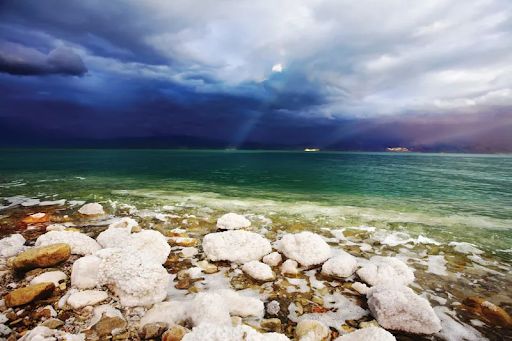
As climate change increases, intense wet or dry weather is likely to become more common. The atmosphere’s moisture capacity increases by roughly 7%, for each 1°C rise in temperature, possibly leading to more intensive rainfall and extended droughts.
An advanced research method influences ocean surface saltiness to forecast Earth’s climate changes. Research indicates a direction: saline areas of the ocean are becoming even saltier. Whereas fresh areas are growing fresher. On that ground, discovered since the Victorian era, caused intensified floods, droughts, and wildfires.
The saltiness of oceans can certainly offer insights into the impact of climate change. Current disastrous floods in Europe, unusual rainfall in Zhengzhou, wildfires caused by extreme heat in northwest America and Turkey, sidestep of Malaysia’s east coast during the monsoon season.
As global warming increases, the atmosphere’s absorptive capacity grows with rising temperatures. This rise in humidity may result in rainfall extremes and intensify droughts by increasing water loss through evaporation in dry regions.
Besides storing solar energy, the ocean plays a critical role in spreading heat globally. Because the water molecules heat up, evaporate, and blend with the air in a process called evaporation. This endless evaporation raises the temperature and moisture range of the enveloping air, leading to the creation of rain and storms, moved across regions by atmospheric winds. Significantly, nearly all ground rainfall arises from the ocean. The tropical zone undergoes high rainfall due to the raised heat assimilation and consequent evaporation in that area.

The method of using ocean saltiness as a rain meter is advanced. By investigating ocean saltiness changes since the 1950s and comparing them to data from 19th-century oceanic excursions, scientists have found that the rate of change has increased. During the 1870s and the mid-20th century, ocean salinity turned partly the rate seen since then.
Awareness of these changes demands a complicated representation of ocean and atmospherical interactions, often conducted on powerful computers. The connection between ocean salinity, rainfall, and temperature intricacies highlights the necessity of accurate forecasts, critical for millions influenced by these extreme weather events.
Essentially, as temperatures continuously rise due to greenhouse gas discharge, adjusting scientific models with historical ocean salinity changes becomes crucial in forecasting and getting ready for future floods, droughts, and their impact on countless lives.
Awareness of the historical rainfall patterns becomes crucial for expecting future changes. Despite the recent ability to make steadfast global statements using satellite technology, setting rainfall changes over long periods like decades or centuries remains challenging.
However, insights about the ocean salinity from earlier times, especially during the industrial age, could offer an understanding of how climate change increases this process.

So, now it is confirmed that the world’s oceans play a crucial role in controlling our planet’s temperature and climate. They function as a powerful heat reservoir, gripping a large portion of the Sun’s radiation. Tropical waters near the equator, in particular, work like huge solar panels, consuming a considerable amount of solar energy. While Earth also consumes sunlight, the ocean’s capacity for heat preservation is impressive, and the environment helps to preserve heat that would otherwise disperse rapidly after sunset.
Ocean currents act as a form of carrier belt, transferring warm water and rainfall from the equatorial regions toward the poles, while concurrently taking cold water from the poles back toward the tropics. Hence, these currents help control the global climate by reducing the uneven allocation of solar radiation achieving the Earth’s surface. Without these oceanic currents, regional temperatures would show more extreme contrasts, extreme heat at the equator, and fierce cold toward the poles. And much of the Earth’s ground would be less facilitative to human living.





